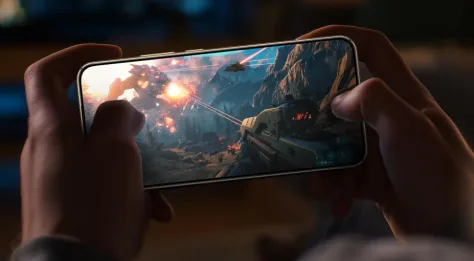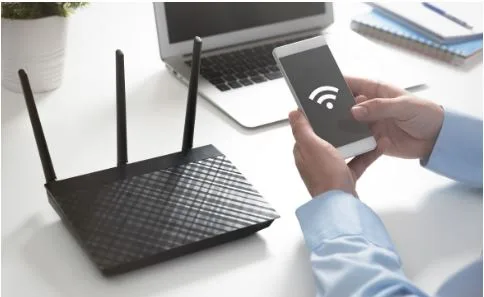Which Features Matter in a College Student’s Phone
Core Hardware Essentials
Processing Power & Memory Requirements
A capable processor lets students run multiple apps without lag. Aim for a recent mid-range or better chipset. Combine that with sufficient RAM—at least 6 GB or more—to handle multitasking. Low memory leads to slowdowns when switching between study apps. Smooth performance helps with document editing, cloud tools, and browser tabs. Don’t skimp on these basics when choosing your campus phone.
Battery Life & Charging Tech
Battery stamina is crucial during long campus days. Look for batteries rated 4,500 mAh or higher to last through lectures, work sessions, and transit. Fast charging features—like 30 W or more—help recharge between classes. Also, check for efficient power use in software. A smartphone that dies early forces constant charging. Reliable battery plus fast refuel equals peace of mind in daily routines.
Storage & Expandability
Storage holds your notes, apps, media, and projects. A base of 128 GB is ideal. If that’s not enough, check for microSD support or cloud backup options. Limited storage results in constant cleanup and frustration. Also consider storage speed—UFS 3.1 or similar offers faster read/write. A balanced storage plan ensures your phone can store files, photos, and apps without slowing down.
Display, Camera & Media Capabilities
Screen Quality, Size & Refresh Rate
A good display improves readability, media, and productivity. Aim for Full HD or better resolution. A refresh rate of 90 Hz or 120 Hz makes scrolling smoother. Screen size should balance portability and viewing comfort—around 6.3 to 6.7 inches is common. Also consider brightness and color accuracy for reading under sunlight. These factors affect how well your phone handles study and leisure visuals.
Camera Quality & Versatility
Smartphone cameras double as document scanners and social tools. Look for decent resolution (at least 12 MP) and good low-light performance. Optical image stabilization helps with shaky hands. A macro or ultrawide lens expands creative options. Video recording in 1080p or 4K helps capture lectures. A versatile camera saves you from carrying extra gear while supporting study and social sharing.
Audio, Speakers & Multimedia Support
Quality audio enhances lectures, streaming, and voice notes. Look for stereo speakers rather than a single bottom speaker. Support for wide audio codecs (like aptX or LDAC) benefits wireless headphones. Also, check the headphone jack or reliable USB-C audio. Multimedia support for formats like MKV, MP4, and subtitles matters for video work. Strong audio features improve your media experience throughout campus days.
Connectivity, Sensors & Network Features
5G, Wi-Fi, Bluetooth & NFC
Modern connectivity is essential on campus. A phone should support 5G for fast mobile data, plus Wi-Fi 6 or newer standards for dorm or campus networks. Bluetooth 5.x ensures stable wireless accessories. NFC lets you tap for campus payments or card access. Phones lacking reliable connectivity struggle with cloud services, streaming, or quick file sharing. These features keep you linked and efficient.
GPS, Orientation & Sensors
Sensors improve usability in navigation and apps. Accurate GPS helps with campus mapping, walking routes, or transit. Orientation sensors, accelerometers, and gyros support AR or fitness apps. A reliable proximity sensor aids calls. Barometers or ambient light sensors enhance app responsiveness. These small parts support bigger experiences. A phone with solid sensing features works smarter in many student tasks.
Security Features & Biometric Support
Security matters for student data, emails, and finances. Look for fingerprint or face unlock for convenience. Advanced encryption keeps files safe. Secure biometric systems thwart unauthorized access. Also check for secure boot and hardware-backed security. Phones that lag in safety risk exposure of personal and class info. Strong authentication and protection features give you peace of mind in daily usage.
Software, Ecosystem & Usability
OS Updates & Longevity
A long update policy ensures compatibility with new apps. Students should target brands offering at least three years of OS and security updates. Older software leads to app errors and vulnerabilities. Regular updates also keep performance stable. A smartphone that receives consistent support stays useful over many semesters. Longevity saves big costs by delaying replacements and ensuring smoother use every day.
App Ecosystem & Student Tools
Your phone must support apps like note editors, cloud storage, video conferencing, and campus platforms. App store reliability ensures access to updates and features. Student tools like digital planners or educational suites must run smoothly. A strong ecosystem links your phone with a laptop or tablet. Friendly app environments reduce friction, letting you focus on studies rather than compatibility issues.
Ease of Use, Accessibility & UI
A clean user interface helps you find apps and tasks quickly. Features like dark mode, readability settings, and gestures aid usability. Accessibility features support those with visual or motor needs. Custom shortcuts let you reach study apps fast. Simple UI avoids clutter and confusion. When day-to-day use feels effortless, you spend less time struggling and more time learning and communicating.
Price, Value & Longevity
Budget Ranges & What You Get
Smartphones for students span budget, midrange, and premium tiers. In the budget level, expect basic performance and fewer extras. In midrange, see balanced specs in battery, camera, and chipset. Premium brings top-end features but a high cost. Map your budget to real needs. Choose where to spend and where to save. That ensures your investment supports college life without overspending.
Trade-offs vs Premium Features
Every student must trade off features. A top camera may cost battery life. High refresh rate screens use more power. Premium materials and design add cost but minimal boost in daily utility. Decide wisely what you really need: speed, battery, or aesthetics. Don’t pay for flashy extras you’ll rarely use. Thoughtful trade-offs help you find a balanced, student-friendly phone.
How to Make Your Phone Last Through College
To extend your phone’s usable life, use a good case and protector. Avoid extreme heat or moisture. Keep software up to date to maintain performance. Clean apps and manage storage to avoid slowdowns. Use battery care practices like avoiding full discharges. Back up data regularly. These habits help a well-chosen phone last for all your academic years and beyond.
Conclusion
You deserve a smartphone that supports study, life, and connection. Focus on core features—hardware, camera, connectivity, updates—and balance trade-offs wisely. When comparing models, checking the HONOR X9d price in ksa helps assess value and performance. Don’t overspend on glitz; choose reliable features you’ll use. Top picks in 2025 deliver strong everyday value, supporting classroom demands and campus life seamlessly.




